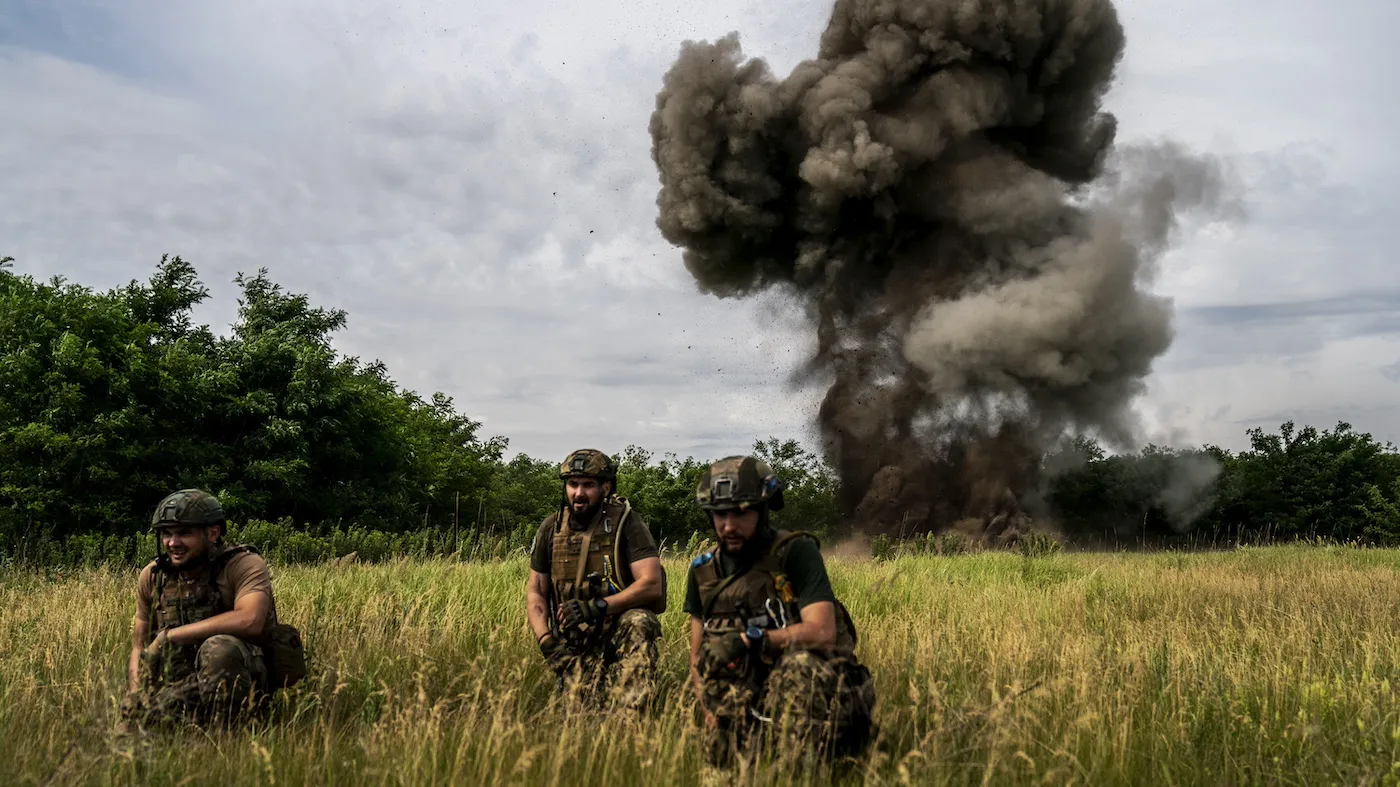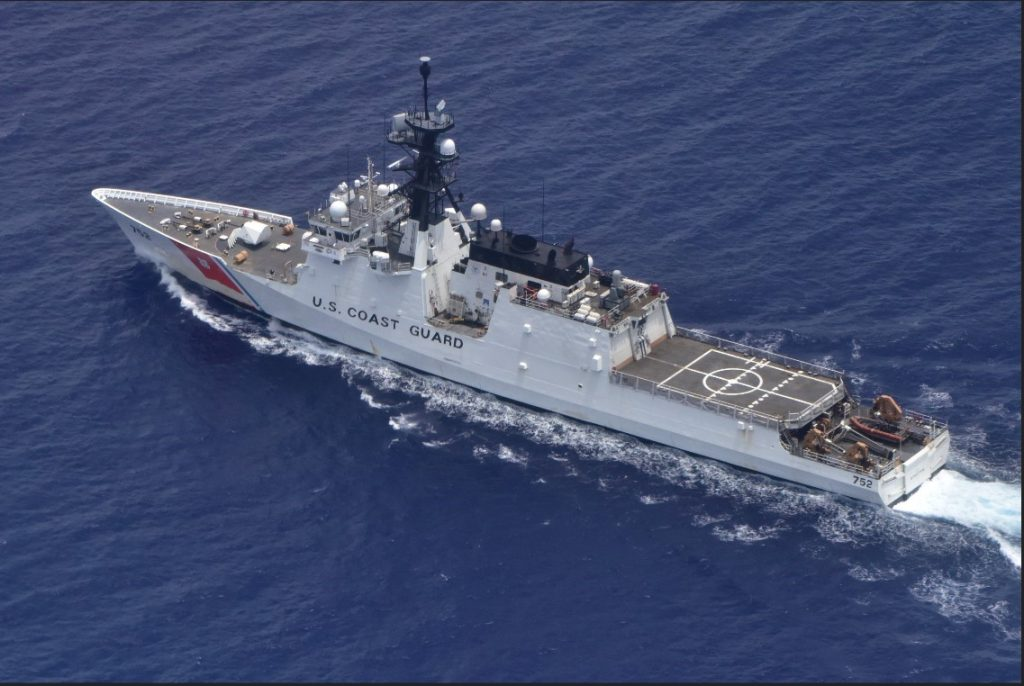When Ukraine began its incursion into Russian territory in August, I hoped that it signaled a strategic shift to an offensive maneuver warfare vice accepting the Russian diktat of an attritional war on the part of both antagonists. I hope that is still the case. If it is, the Ukrainians are looking for the next weak spot along the front, not just in eastern Ukraine, but along its extensive border with the Russian homeland. One of the prime tenets of maneuver warfare is that the enemy cannot be strong everywhere, and that it is best to strike at weak spots (gaps). I am hoping that Kyiv is looking for the next big gap.
Since the Kursk incursion began, the Russians have doubled down in their offensive in the Donbass and rushed reinforcements to the Kursk region. Despite, the gloom of some number crunchers, the Russian supply of manpower is not unlimited. Putin is limited by domestic constraints from issuing a general draft call-up and there are only so many prisoners that can be released to swell Russian ranks. There are weak spots like Kursk elsewhere. The art in operational art is finding them and exploiting them.
The Ukrainians have shown a natural inclination for maneuver warfare at the tactical level and have occasionally at the operational level. It remains to be seen if they can do it at the strategic level of war. By this time, the Ukrainians realize that the war will eventually have to be resolved at the bargaining table, and the more land -particularly Russian- that they have when talks begin, the better off they are. These kinds of pinprick incursions -particularly those into Russian territory- place the Moscow’s troops in a “whack a mole” situation.
The real power of maneuver warfare when done well is in the mind of the enemy. When his observation-orientation-decision-action cycle (also known as the OODA Loop) is disrupted he can go into a mental fetal position.
The first time I actually witnessed this happen was in the late 1980s in Twentynine Palms California. Back in those days, the Marine Corps was still practicing maneuver warfare. The commandant, General Al Gray’ was sponsoring force-on-force exercise to test the ability of his field commanders.
During this particular exercise, a mechanized Marine Corps Regimental Combat Team (Red) was fighting a smaller experimental light unit from the Army’s nearby Fort Irwin (Blue). The Blue force was tasked with a delaying action against the superior red force.
The Army commander opted not to wage a pitched battle. He struck at the flanks and rear of the blue force. The Red commander became so obsessed with his line of communication that he adopted a slow deliberate phase-line by phase line approach that disrupted the timeline given to him by his higher headquarters.
By the last day of the exercise, the red unit’s lead element was still ten kilometers from the goose egg on the map that designated as his final objective. Despite prodding by higher headquarters, the red commander refused to move until he had built up more combat power as he was convinced that the seeming lack of enemy resistance meant a trap. Actually, the bulk of the blue force had packed up and gone home the night before. To put the exercise out of its misery, higher headquarters expanded the goose egg to include the red forward elements and declared victory.
Unlike today, the after-action reviews were brutal and frank, and this one was led by General Gray himself. At one point, one of the evaluators looked the red commander in the eye and said, “Let’s face it, you froze.” He had no coherent answer. That was a perfect example of having one’s OODA loop disrupted. Today’s senior Marine Corps leadership has not taken the written doctrine about maneuver warfare off the shelf, but what it is practicing is classic defensive positional warfare designed at wearing down the Chinese navy by attritional strategy. It is a maritime version of the French Maginot Line. Ukraine cannot afford a strategy of attrition in the long run.
The Twentynine Palms exercise was tactical but imagine how something of that sort would impact a centralized command and control system of the Russian ilk. A Russian commander or regional governor along a supposedly quiet sector of the front manned by conscripts who have been promised they would see no combat is suddenly confronted by elite Ukrainian shock troops. He desperately calls for reinforcements which must be ponderously moved from another sector by a layered military bureaucracy. The Ukrainians patiently watch to see from where these forces have been moved and begin planning the next strike there. Kyiv’s forces send in regular troops to defend the recently occupied territory while the assault forces mass for the next strike at the newly weakened sector while the Russians suffer increasing casualties trying to retake lost ground. That is maneuver warfare at the strategic level should Kyiv decide to adopt it.
The Pentagon will be a problem here. Most of our general officers would not know maneuver warfare if it bit them in the proverbial butt, Many Ukrainian planners have complained bitterly about the “help” they received from American advisors in the runup to the botched 2023 Spring Offensive. The Americans tried to overlay their ponderous and overly scripted planning system on a situation where it was not culturally or operationally appropriate, just like Afghanistan. Like the French in the Hundred Year War, the Pentagon has forgotten nothing and learned nothing.
At this point, the Russians Have rushed reserves to the Kursk front to cauterize the wound and are resuming their Donbass offensive. They are probably writing off Kursk as a fluke. I have no idea if the Ukrainians are planning a maneuver warfare strategy, but they would be well advised to do so.
If the Ukrainians have not made another follow-up attack quickly, it does not necessarily mean that they are not developing a maneuver strategy. Many people equate maneuver warfare with fast moving blitzkrieg campaigns such as the world War II German invasions of Poland and France or the early battles in Russia. In fact. one of the greatest strategic examples of maneuver warfare at the strategic level took three years to complete in Genghis Khan’s conquest of the Khwarazmian Empire from 1219-1221. Although the Mongol Army was larger than that of Shah Muhammed II, the shah adopted a defensive strategy of dividing his army and fortifying key cities along the expected Mongol line of advance including his capital of Samarkand in order to cause attrition due to a series of prolonged sieges. Realizing this, Genghis split his army into five columns. He had what appeared to be the main attack move deliberately along the most likely axis of advance on the road to Samarkand. Meanwhile, the main striking force came through the supposedly impassible Kyzylkum Desert. What the Shah thought was an obstacle, was actually a gap in his defenses.
As he watched what he thought was the main attack struggle with the first city the Mongols encountered, the shah was lulled into a false sense of security and believed his strategic attritional plan was working. When the main Mongol force burst out of the desert and captured the lightly defended city of Bukhara, the plan unraveled and the empire was doomed. Using the Mongol equivalent of special forces to spread propaganda and terror behind the lines, the will of the Shah’s army and population eventually disintegrated His dispersed forces were never able to concentrate enough to defeat the Mongols. By 1221, the empire ceased to exist. The Mongols won through a combination of stealthy maneuver, surprise, and psychological warfare. The Ukrainians have shown skill at all three. They should exploit them.





